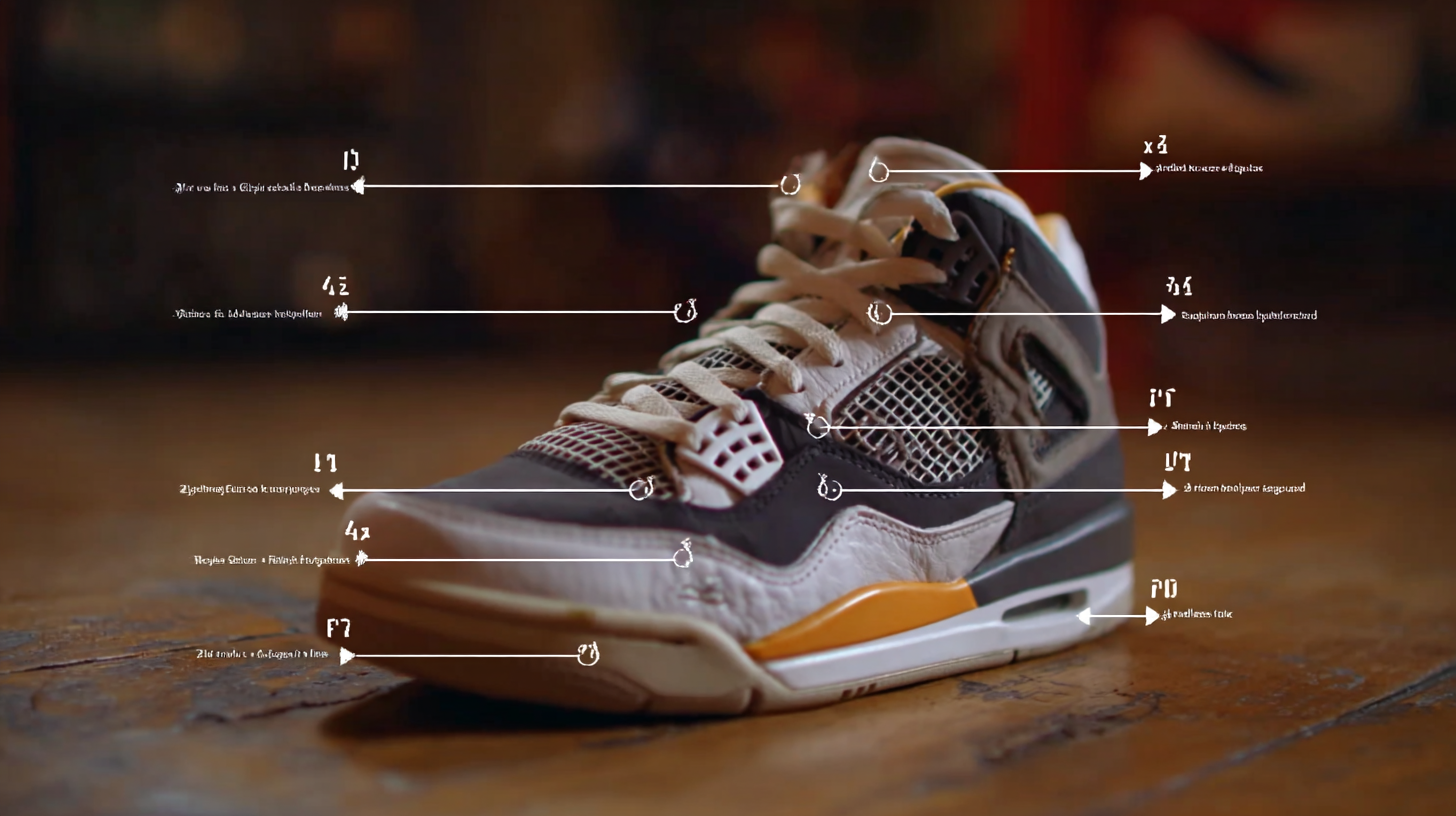
As the global sneaker market is projected to reach a staggering $120 billion by 2025, the importance of selecting the right pair for your foot type has never been more critical. With a growing array of options catering to various needs, understanding the nuances of different sneaker designs and their impact on comfort, performance, and even health is essential. Recent studies indicate that approximately 70% of individuals wear sneakers that do not properly accommodate their foot shape, potentially leading to long-term foot issues. This guide aims to provide expert insights and practical tips to navigate the often overwhelming sneaker landscape, ensuring that you find the best fit tailored to your unique foot type. Whether you are a casual walker, an avid runner, or someone seeking stylish everyday wear, this comprehensive analysis will empower you to make informed choices in the ever-evolving world of sneakers.

Understanding your foot type is essential for selecting the right sneakers, as it directly affects comfort and performance. According to a report by the American Orthopaedic Foot & Ankle Society, approximately 75% of people experience foot problems at some point in their lives. This statistic underscores the importance of choosing footwear tailored to individual foot shapes, which can significantly prevent injuries and enhance overall physical well-being.
 There are three primary foot types: neutral, overpronated, and underpronated. A study published in the Journal of Biomechanics found that neutral feet benefit from cushioning and stability, while overpronated feet, characterized by excessive inward rolling, require supportive sneakers that provide motion control. Conversely, underpronated or supinated feet need shoes with ample cushioning to alleviate the impact on the outer edges of the foot. Understanding these distinctions is crucial for making informed choices when selecting sneakers that can support your unique biomechanics and improve your athletic performance.
There are three primary foot types: neutral, overpronated, and underpronated. A study published in the Journal of Biomechanics found that neutral feet benefit from cushioning and stability, while overpronated feet, characterized by excessive inward rolling, require supportive sneakers that provide motion control. Conversely, underpronated or supinated feet need shoes with ample cushioning to alleviate the impact on the outer edges of the foot. Understanding these distinctions is crucial for making informed choices when selecting sneakers that can support your unique biomechanics and improve your athletic performance.
When selecting the right sneakers for your foot type, understanding essential features tailored to your specific needs is vital. According to a study by the American Podiatric Medical Association, nearly 70% of adults experience foot-related issues, underscoring the importance of proper footwear. Individuals with flat feet should seek sneakers that offer maximum arch support and stability to prevent overpronation. Look for shoes with cushioned insoles and a wider base, which can help balance the foot's alignment during movement.
For those with high arches, prioritize sneakers that provide ample cushioning and flexibility. A study from the Journal of Sports Sciences suggests that high-arch owners benefit from a supportive midsole that absorbs impact effectively, reducing strain on the lower limbs. Choose models with shock-absorbing properties and firm heel counters to maintain proper foot posture.
**Tips:** When trying on sneakers, ensure there is about a thumb’s width of space between your longest toe and the shoe's end to accommodate any swelling during physical activity. It’s also beneficial to shop for shoes later in the day, as feet naturally swell, ensuring a more accurate fit for your daily activities.
This chart displays the recommended sneaker features for different foot types based on expert insights. It highlights the essential attributes for high arches, flat feet, and neutral arches.
When it comes to selecting the best sneakers, comfort and support are paramount. Experts emphasize that different foot types require specific features to ensure optimal performance and prevent injury.
For individuals with high arches, brands like ASICS and Brooks offer models with ample cushioning and built-in arch support. These sneakers provide the necessary stability and can help alleviate discomfort during extended wear or high-impact activities.
For those with flat feet, New Balance and Saucony are recommended for their wider designs and motion control features. These brands excel in providing the necessary support to correct overpronation and reduce strain on the arches.
Additionally, Nike has recently introduced innovative designs that cater to various foot shapes, enhancing overall comfort without compromising style. By paying attention to expert insights and selecting reputable brands, you can discover sneakers that not only fit your foot type but also elevate your daily activities and workouts.
To find the perfect sneaker fit, it’s crucial to begin with accurately measuring your feet. Start by gathering a few essential items: a ruler or measuring tape, a piece of paper, and a pen. Place the paper on a flat surface, ideally against a wall, and stand on it with your heel touching the wall. Mark the longest toe on the paper, then measure the distance from the edge of the paper to that mark. Repeat this process for both feet, as many people have slight differences in size.
Once you've measured your feet, use the measurements to refer to a sizing chart specific to the brand you are interested in. It's worth noting that different brands may vary slightly in their sizing, so checking their individual charts can help you avoid any discrepancies. Additionally, consider other factors like foot width and arch support based on your unique foot shape. Remember, trying on sneakers later in the day can provide a more accurate fit as feet tend to swell throughout the day. With these simple steps, you're well on your way to selecting sneakers that not only fit perfectly but also cater to your foot type, enhancing comfort and performance.
| Foot Type | Recommended Sneaker Features | Best Measurement Method | Expert Tip |
|---|---|---|---|
| Flat Feet | Good arch support, motion control | Wet foot test or tracing | Look for shoes designed for stability. |
| High Arches | Cushioned insoles, flexibility | Ruler measurement of arch height | Select sneakers that offer extra padding. |
| Wide Feet | Roomy toe box, wider fit | Measure at the ball of the foot | Check for available widths in styles. |
| Narrow Feet | Snug fit, adjustable lacing | Measure heel to ball of foot | Consider footwear with adjustable straps. |
| Neutral Feet | Balance of cushioning and support | Standard measurement with brannock device | Versatile options work best for varied activities. |
Maintaining your sneakers is crucial for both longevity and performance, ensuring that your investment stands the test of time. According to a recent report by the American Podiatric Medical Association, nearly 80% of people experience foot problems due to poor footwear choices. One effective way to combat this is through proper care of your sneakers. Regular cleaning not only removes dirt but also helps prevent materials from breaking down prematurely. Use a soft brush and mild soap to gently scrub the exterior while ensuring you don’t saturate the shoes, as excess water can damage the structural integrity.

Another key aspect of sneaker maintenance is proper storage. According to a study by the Institute of Foot and Ankle Professionals, improperly stored shoes can lose their shape and comfort over time. To prevent this, store your sneakers in a cool, dry place away from direct sunlight. Keep them in their original boxes or use shoe trees to maintain their form. Additionally, rotate your sneakers regularly to allow each pair to breathe and recover from wear.
Lastly, always inspect your sneakers for wear and tear. The Journal of Sports Sciences indicates that worn-out shoes can lead to injuries, as they offer less support and cushioning. By being proactive and replacing worn-out sneakers before they compromise foot health, you not only extend their life but maintain optimal performance during your activities.
